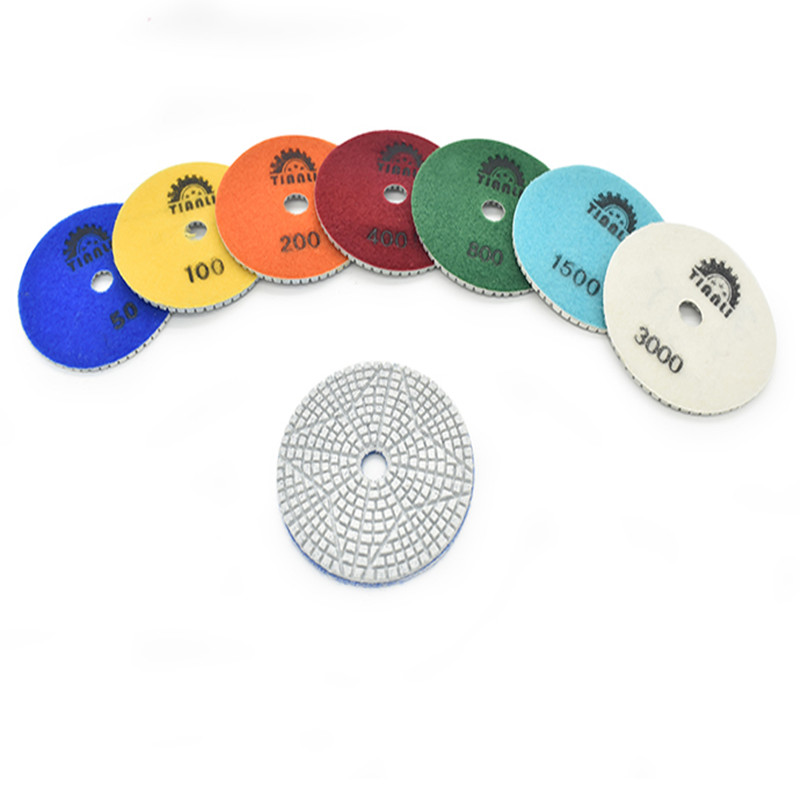Home → Features → Natural Sciences → Chemistry → Physical Chemistry
They're actually more similar than you'd think. Grinder Pads For Polishing

Every bit of matter around you is held together by chemical bonds. Simply put, a chemical bond is the force that holds two or more atoms together to form a molecule. Sometimes, chemical bonds are broken, such as during a chemical reaction, only for atoms to bond again to form different molecules. Energy is always released to generate bonds and, likewise, energy is always required to break bonds.
When it comes to the world of chemistry, two types of chemical bonds reign supreme: covalent and ionic bonds. These bonds play a critical role in the chemical reactions that occur all around us, from the food we eat to the air we breathe. But what exactly are covalent and ionic bonds, and what sets them apart? Let’s take a closer look.
Atoms bond together to form compounds because in doing so they attain lower energies than they possess as individual atoms, becoming more stable in the process. By the Law of Conservation of Energy, when a new chemical bond is formed, the chemical reaction releases an amount of energy (usually as heat) almost equal to the difference in the amounts of stored chemical energy between the products and the reactants. This stored chemical energy of the system, or heat content, is known as its enthalpy.
An ionic bond forms when two ions of opposite charges exchange electrons between them, where an ion is an atom that has either lost or gained an electron. Ions that lose one or more electrons have more protons than electrons, which means they have a positive charge. Such ions are called cations (metals). On the other hand, gaining electrons grants the ion a negative charge. Chemists refer to such ions as anions (non-metals).
Ionic compounds are typically neutral. Therefore, ions combine in ways that neutralize their charges.
A textbook example of an ionic compound is sodium chloride, also known as table salt. A single sodium atom has 11 protons and 11 electrons, but only a single electron in its outer shell (or valence shell). Chlorine is made up of 17 protons and 17 electrons, and has 7 electrons in its outer shell. When the two atoms react, sodium (electropositive) loses its valence electron to chlorine (electronegative). Now, in the resulting crystal structure, each sodium ion is surrounded by six chloride ions and each chlorine ion is surrounded by six sodium ions. What’s more, each ion has a complete electron shell that corresponds to the nearest inert gas; neon for a sodium ion, argon for a chloride ion
Covalent bonds form when atoms or ions share electrons such that their outer shells become occupied. Covalent bonds, also called molecular bonds, only form between nonmetal atoms with identical or relatively close electronegativity values, as these elements have a strong tendency to gain or lose electrons, making the sharing of electrons a more favorable option. Electronegativity, denoted by the symbol χ, is a chemical property that describes the tendency of an atom to attract a shared pair of electrons (or electron density) toward itself.
The number of covalent bonds an atom can form is called the valence of the atom. This property represents the electrons of an atom that can participate in the formation of chemical bonds with other atoms. They are the furthest electrons from the nucleus.
A prime example of a covalent bond is the hydrogen molecule, which forms from two hydrogen atoms, each with one electron in its outer shell. Bond formation releases heat; therefore, it is exothermic. For the hydrogen molecule, the heat released during its formation, also known as the standard enthalpy change (ΔH°), is −435 kJ per mole. The reverse process, breaking the H—H bond, requires 435 kJ per mole, a quantity called the bond strength.
Another classic example of a covalent bond is hydrogen chloride (HCl), which is a hydrogen halide. The chlorine atom has 7 atoms in its outer shell while hydrogen has 1 electron in its outer shell. Both combine perfectly so each atom fills its valence shells, forming a highly stable molecule. Now, the HCl molecule will not react further with other chlorine or hydrogen atoms.
In conclusion, covalent and ionic bonds are two types of chemical bonds that play a critical role in the world of chemistry. Covalent bonds are formed through the sharing of electrons between atoms, while ionic bonds are formed through the transfer of electrons. While both types of bonds are essential, they have distinct differences in their properties, including strength, melting and boiling points, and solubility. Understanding these differences is crucial for understanding the chemical reactions that occur all around us.
© 2007-2023 ZME Science - Not exactly rocket science. All Rights Reserved.

Grinding And Buffing Wheels © 2007-2023 ZME Science - Not exactly rocket science. All Rights Reserved.